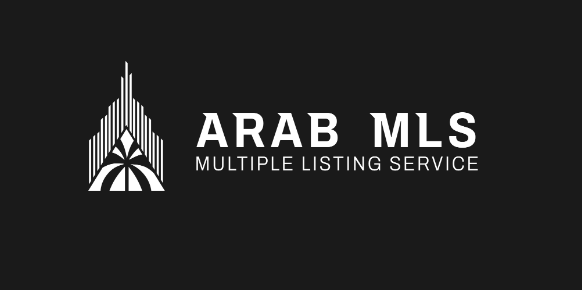The real estate market is continuously evolving, and with the increasing demand for affordable, sustainable, and customizable housing, modular and prefab homes have gained significant attention in recent years. These types of homes, which are constructed off-site in a factory setting and then assembled at their final location, offer numerous advantages such as cost-effectiveness, shorter construction timelines, and reduced environmental impact. As interest in modular and prefab homes grows, Multiple Listing Service (MLS) platforms are adapting to meet the needs of both sellers and buyers in this niche market.
In this article, we will explore how MLS platforms cater to modular and prefab home listings, the advantages of these homes, and the key features to highlight when listing them on MLS. We will also discuss the challenges and opportunities involved in marketing and selling modular and prefab homes through MLS.
Understanding Modular and Prefab Homes
Before diving into how MLS platforms are adapting to modular and prefab homes, it is important to understand what these terms mean and how they differ from traditional site-built homes.
Modular Homes
Modular homes are homes that are built in sections or modules in a factory, then transported to the home site where they are assembled. These homes are designed and constructed to meet local building codes, and they are typically indistinguishable from traditional homes once completed. The key advantage of modular homes is that they are built in a controlled factory environment, which reduces delays due to weather and ensures that materials are protected from the elements.
Modular homes are typically more affordable than traditional homes because they require less labor and time to construct. However, they still offer high-quality craftsmanship and customization options, which makes them an attractive option for many buyers.
Prefab Homes
Prefab homes, or prefabricated homes, are a broader category that includes any home that is built off-site before being transported and assembled at its final location. Prefabricated homes can be further divided into several subcategories, including modular homes, panelized homes, and kit homes. The common thread among all prefab homes is that they are built in a factory setting and then transported to their final destination.

Like modular homes, prefab homes offer the benefit of reduced construction time and cost. They also allow for a high degree of customization, with buyers able to choose from a range of designs, floor plans, and finishes.
The Growing Popularity of Modular and Prefab Homes
The demand for modular and prefab homes has been growing steadily in recent years, and this trend is expected to continue as more buyers look for affordable, sustainable, and customizable housing options. Several factors contribute to the growing popularity of modular and prefab homes:
- Affordability: Modular and prefab homes are typically more affordable than traditional site-built homes. The construction process is faster and more efficient, leading to lower labor costs and reduced material waste. Additionally, factory-built homes can be produced in bulk, which further reduces costs.
- Speed of Construction: One of the main selling points of modular and prefab homes is the speed at which they can be built. Since much of the construction occurs in a factory, homes can be completed in a fraction of the time it takes to build a traditional home. This makes modular and prefab homes an attractive option for buyers who need a home quickly or who want to avoid the lengthy construction process of traditional homes.
- Sustainability: Many modular and prefab homes are built with energy-efficient materials and systems, making them an attractive option for environmentally conscious buyers. Additionally, the controlled factory environment in which these homes are built reduces material waste and minimizes the environmental impact of the construction process.
- Customization: Modular and prefab homes offer a high degree of customization. Buyers can choose from a variety of floor plans, finishes, and design elements to create a home that suits their preferences and needs. This level of customization makes these homes appealing to a wide range of buyers.
- Quality Control: Since modular and prefab homes are built in a factory setting, they are subject to strict quality control measures. This ensures that each component is built to the highest standards, which can result in a home that is more durable and well-constructed than traditional site-built homes.
Listing Modular and Prefab Homes on MLS
As the demand for modular and prefab homes continues to grow, MLS platforms are adapting to accommodate these types of properties. Many MLS systems are now allowing modular and prefab homes to be listed alongside traditional site-built homes, providing greater visibility to sellers and buyers alike.
There are several benefits to listing modular and prefab homes on MLS, including increased exposure, access to a large pool of potential buyers, and streamlined transaction processes. Below are some of the key advantages of listing modular and prefab homes on MLS:
1. Increased Visibility
One of the biggest advantages of listing modular and prefab homes on MLS is the increased visibility they receive. MLS platforms provide exposure to a large pool of real estate professionals, including agents, brokers, and potential buyers. This increased visibility can help sellers attract more buyers, including those who may not have previously considered modular or prefab homes. MLS listings also allow buyers to search for homes based on specific criteria, such as price range, location, and features, making it easier for them to find properties that meet their needs.
2. Access to a Wide Audience
MLS platforms are widely used by real estate agents and brokers, which means that listings for modular and prefab homes can be shared with a broad network of professionals. This can help sellers reach a wider audience of potential buyers, including those who may not be actively searching for these types of homes but are open to the idea. By listing on MLS, sellers can tap into a network of real estate professionals who can help promote the property and find the right buyer.
3. Customized Search Filters
Many MLS platforms offer advanced search filters that allow buyers to narrow down their search based on specific criteria. For modular and prefab homes, these filters can be customized to include key features such as the type of construction (modular or prefab), energy-efficient systems, and sustainable building materials. Buyers can use these filters to find homes that meet their specific needs, whether they’re looking for a budget-friendly home, an eco-friendly property, or a home with a modern design.
4. Professional Marketing and Representation
MLS listings are typically managed by licensed real estate agents, which ensures that the property is marketed and represented professionally. A knowledgeable agent can help sellers effectively showcase the unique features of modular and prefab homes, such as their cost-efficiency, speed of construction, and sustainability. Agents can also provide expert advice on pricing and market trends, helping sellers price their homes competitively.
5. Access to Market Data
MLS platforms provide access to valuable market data that can help sellers price their modular and prefab homes effectively. By reviewing comparable listings and sales data for similar properties, sellers can get a better sense of what their home is worth and make adjustments to the asking price as needed. This data is also useful for buyers, who can use it to assess whether the asking price is fair based on the property’s features, location, and size.
Key Features to Highlight When Listing Modular and Prefab Homes
To attract the right buyers, modular and prefab home listings should emphasize specific features that set these homes apart from traditional site-built homes. The following features are important to highlight when listing a modular or prefab home on MLS:
1. Construction Type and Materials
Buyers interested in modular and prefab homes will want to know about the type of construction used. Listings should specify whether the home is modular, panelized, or a kit home. It is also important to highlight the materials used in construction, such as sustainable or energy-efficient materials, and any certifications the property may have, such as LEED or Energy Star.
2. Customization Options
Modular and prefab homes offer a high degree of customization. Buyers may be interested in knowing whether the home can be easily modified or expanded. Listings should include information about the flexibility of the design and whether the home can be customized to meet the buyer’s specific needs.
3. Energy Efficiency Features
Many modular and prefab homes are built with energy-efficient features, such as solar panels, energy-efficient appliances, and insulation. Listings should highlight these features and explain how they contribute to the property’s energy savings and sustainability. Energy-efficient homes are often more appealing to buyers who are looking to reduce their environmental impact and lower utility costs.
4. Cost Savings and Affordability
Affordability is one of the biggest selling points of modular and prefab homes. Listings should emphasize how these homes offer a cost-effective alternative to traditional site-built homes. This may include information about the reduced construction time, lower labor costs, and savings on materials.
5. Speed of Construction
The fast construction timeline of modular and prefab homes is another key selling point. Listings should mention how quickly the home can be completed, allowing buyers to move in sooner than they would with a traditional home.
Challenges and Opportunities in Listing Modular and Prefab Homes
While listing modular and prefab homes on MLS offers numerous advantages, there are also some challenges that sellers and agents should be aware of:
1. Perception Issues
Some buyers may still have misconceptions about modular and prefab homes, viewing them as inferior to traditional site-built homes. Sellers and agents must work to educate buyers about the benefits and quality of these homes, highlighting their cost-effectiveness, sustainability, and customization options.
2. Niche Market Appeal
Modular and prefab homes appeal to a specific market of buyers who are looking for affordable, sustainable housing. Sellers may need to be patient while waiting for the right buyer to come along, but as demand for these types of homes increases, the market is likely to grow.
Conclusion
Modular and prefab homes are becoming an increasingly popular option for buyers who value affordability, sustainability, and customization. MLS platforms are adapting to meet the demand for these types of homes by offering increased visibility, advanced search filters, and professional representation. By listing modular and prefab homes on MLS, sellers can reach a broader audience of potential buyers and take advantage of the marketing and data tools provided by MLS platforms.
As the market for modular and prefab homes continues to grow, these homes are likely to become an even more prominent feature on MLS listings. With the right marketing and representation, modular and prefab homes have the potential to attract a wide range of buyers seeking affordable, sustainable, and customizable housing solutions.













